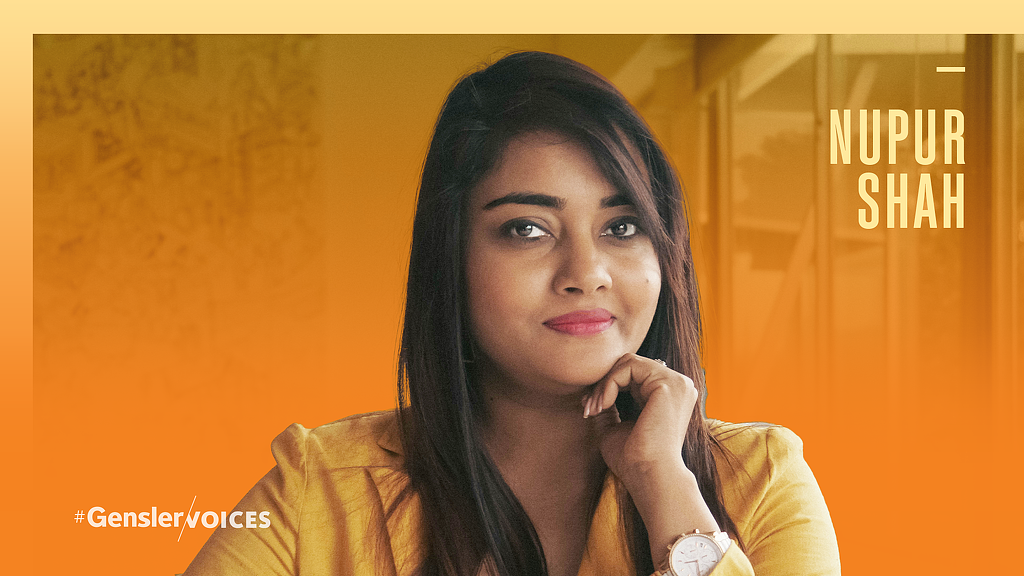Gensler Voices: Nupur Shah on Defying Expectations
This Q&A is part of a series of interviews with Gensler architects, designers, and others in the firm about their career journey, and the impact that design and architecture can have on our communities and the human experience. Here, we sit down with Nupur Shah, senior designer, Gensler Bangalore:
What’s the best career decision you’ve ever made?
Coming from a society where the only career choices culturally acceptable are either medicine or engineering; one of the more radical (and best) decisions I have taken was to follow my heart. I started my career as a physical therapist, and while working I started to realize the impact of spatial design on the user’s experience. I realized how much the design of a space could either enable or compromise the function for which it is built. That’s when I decided to make my shift to explore design as a career. As I continue my journey as a designer, my career goal remains the same as it has always been - to make a positive difference in people's lives.
Most career journeys aren’t linear. What has yours looked like?
Yes, they most definitely aren’t… In fact, my journey is a quintessential example of how non-linear it can be! A proper math/science nerd, my unconventional career journey started in health care. The major shift happened when I transitioned to a designer as I mentioned earlier. To an outsider, my path would seem to be a series of twists and turns, yet to me, being a designer was like coming back to where my heart really belonged. I gained experience in various practice areas like hospitality, education, and residential, but workspace is where I finally belonged. In today’s age, most people spend a major part of their day in their workspace, and as a workspace designer, I get the opportunity to make a difference in this environment. After all, lifestyle decisions are one of the major contributors to a user’s mental and physical well-being.If you could impart any piece of advice to individuals beginning their design career, what would it be?
As designers and architects, we love to explore and innovate big ideas – challenge our imaginations. I recommend young designers to be inquisitive and observant. It is important to be aware of the long-term potential and consequences of our designs. Pushing the boundaries of our imaginations comes with untested explorations, so it’s important to be accountable. To make sure our great ideas are built into great spaces.
What do you think are the most important skills to succeed in architecture?
It's very easy to get stuck in the routine and follow them on autopilot mode day after day. As a designer, it is essential to understand the importance of being engaged and conscious. We should ask questions, understand what is going on beyond the surface levels, and look past the defined rules. Designers have the power to impact the world around us, and like Spiderman says, “With great power comes great responsibility” – a responsibility to design consciously using our skills.
What are you most excited about when it comes to the future of architecture and design?
Coming from a humble background and not the land of plenty, I have always been inspired to design with minimal elements which create effective and functional spaces. The future of minimizing carbon footprint – of which one aspect is prudent material use, connects to where I come from and what I practice. Using what we really need, and the things that matter the most. Moreover, an approach of creating not equity of access but equal experiences for diverse users is what excites me as a designer.How can architecture and design make space that’s inclusive for everyone?
As a physical therapist, I experienced and worked in spaces that were non-inclusive, and as a user, these environments were stressful, uncomfortable, and almost unsafe. Now, as a designer, I have come to realize that inclusive design is possible only through conscious design choices rooted in compassion and consideration. As we design spaces, we need to be more intentional about asking the users what they need, and that will be the first step towards universal design.
For media inquiries, email .
